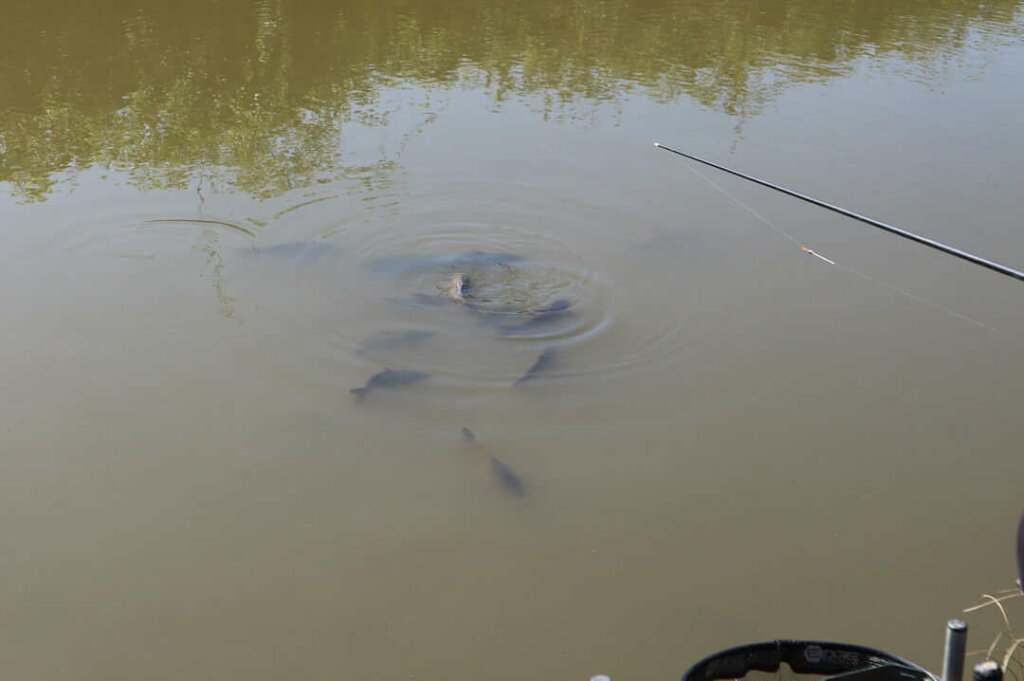From Canals to Snakes
Then and Now
Loving canal fishing, I was immediately interested when the snake lake concept arrived. Heyford in Northamptonshire was the first one I ever visited, way back when long poles were much heavier. It became hard work if the inhabitants backed off to the far bank on wider parts when there were lots of anglers about. We didn’t have puller bung systems, also relying on standard elastics, which made taming anything big long-winded. Things have changed dramatically on the tackle front, with better poles, stronger top kit options and higher performance latex. Tactics have altered too compared to early snake experiences, discovering as these places mature, not everything hugs the far side. Feed right and fish will come to you, such as here on this canal-like venue at Townsend Lakes, which has evolved into looking more like an overgrown backwater.
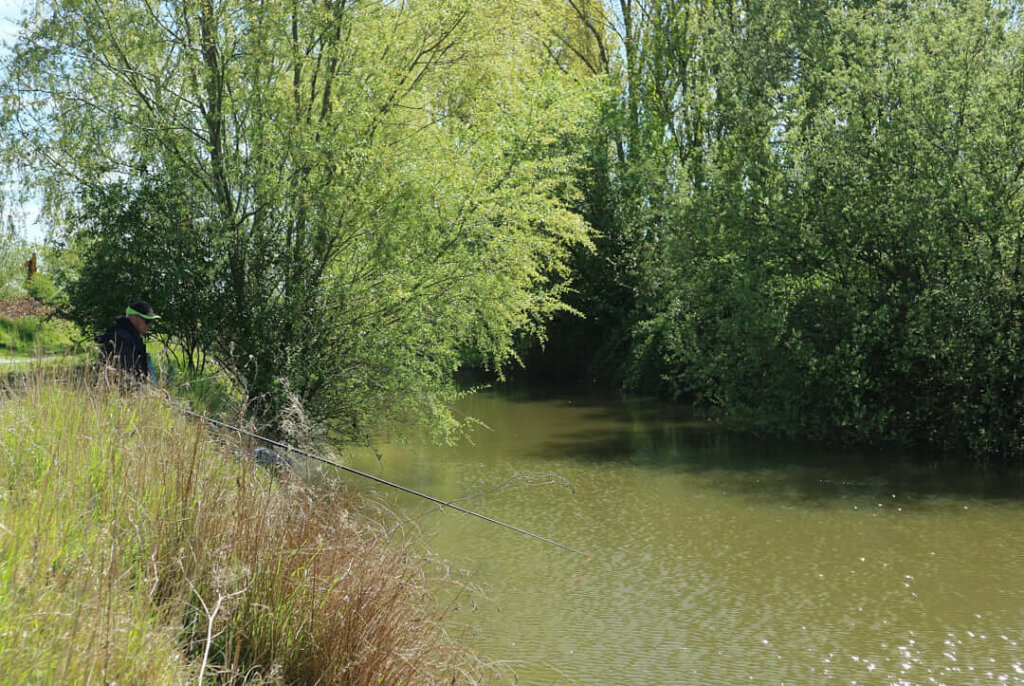
Basic Approach
It’s best to keep things simple when a lot of fish are on the cards. In this case, the snake wasn’t over wide, so 3mm feed pellets could easily be propelled far enough. I also had some 4mm hard ones to top up with and for use banded on the hook, along with a small bowl of Super G Green. The plan was to kick off down the middle in the deepest water, cupping in two small balls of groundbait laced with pellets. I could always chase fish over if they backed off, but didn’t want to venture too close to the far side, where any bigger carp would inevitably try to snag the end tackle among the heavy overhanging brambles. The Cadence CP800 Margin Pole is perfect for this type of robust fishing. A couple of top kits had Edge 10-12 Red Hollow Latex fitted, combined with C2 Commercial Pole Floats, 0.15mm Premium Mono and light shotting.
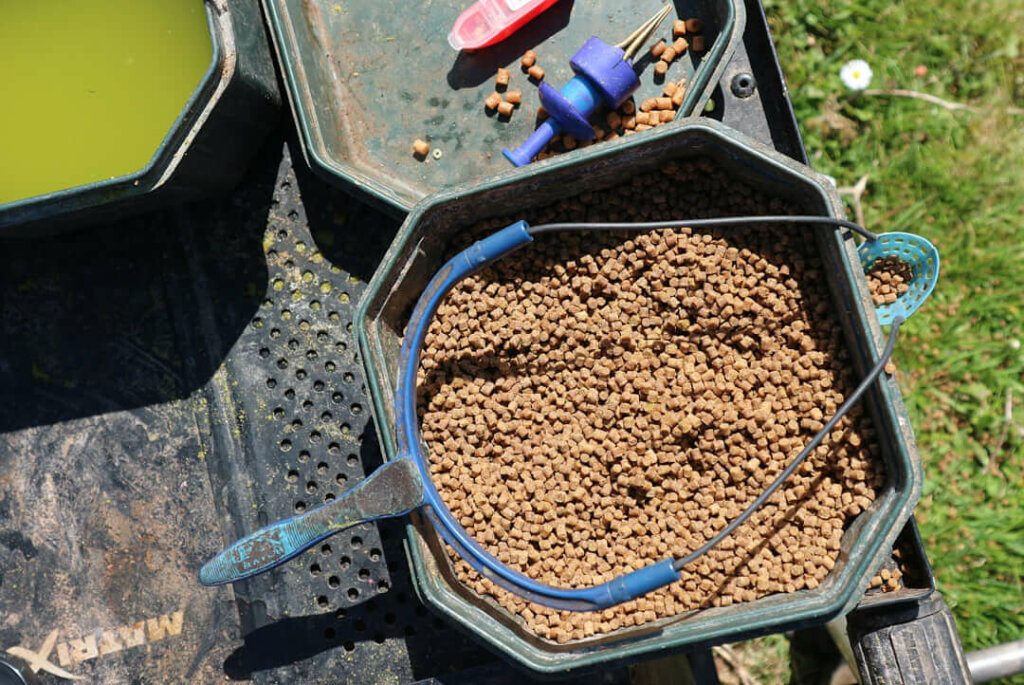
Early Action
Having fished this snake before, I knew it was packed with fish, dominated by carp, but also teeming with lots of tiny silvers. The latter are mainly rudd, which are easier to get through with hard pellets. Banding a hard 4mm size resulted in plenty of bites straight away, despite the sunny conditions. To begin with, there were only odd surface cruisers, and it was mainly small rudd dimpling over the spot I was feeding. A full depth rig worked best because anything off the bottom was immediately attacked by the small stuff. The float kept going under, and it was mainly carp, ranging from hand size up to 2lbs, along with crucian-like F1s. Not going too far across seemed like the right decision because shipping any more pole sections would have slowed everything down. Everyone else around me was keeping very busy as well.
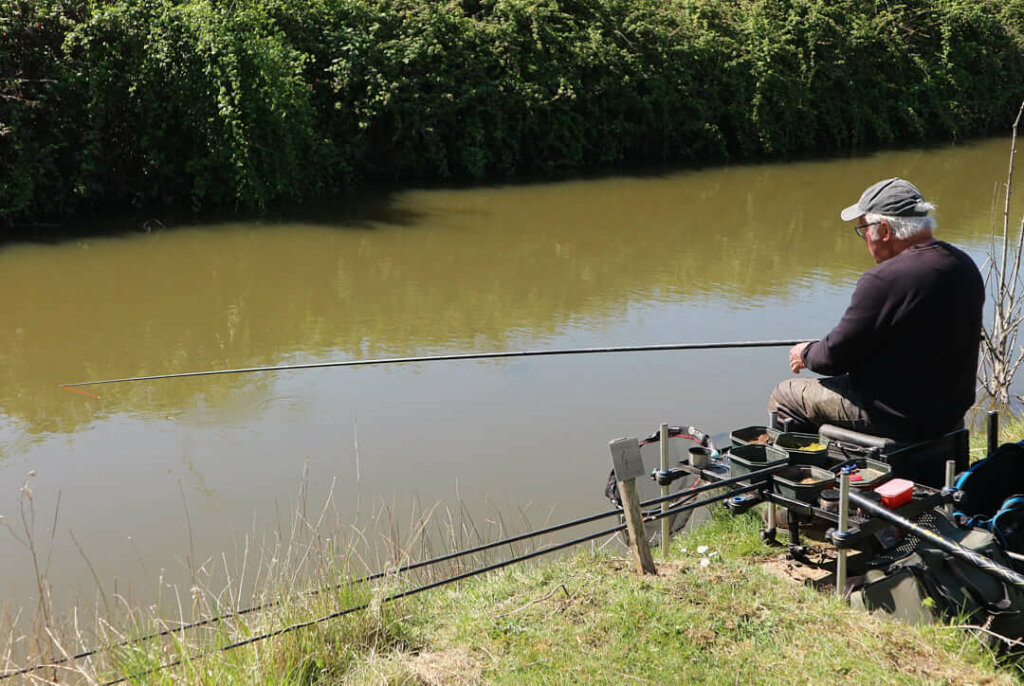
Tackle Testing
Although I don’t do much of this type of thing, I fully get why it’s so popular. On venues like this, providing there is bait on the hook, you know your float is about to go under. It’s nice to be constantly using a landing net, giving the tackle a proper hammering. It highlights what hooks, line, floats and pole elastic are up for the job, so you know the same gear can be trusted in other situations. But I couldn’t do this all the time. I would miss the challenge of using more refined rigs, trying to cajole more difficult natural places into producing. Catching to order by fishing commercials as we call them, isn’t a concept born here, or in Europe for that matter. It started in the Far East, where I spent my early years. Countries on the other side of the world had well-stocked pools, where you buy a day ticket and catch plenty of fish, well before we did.
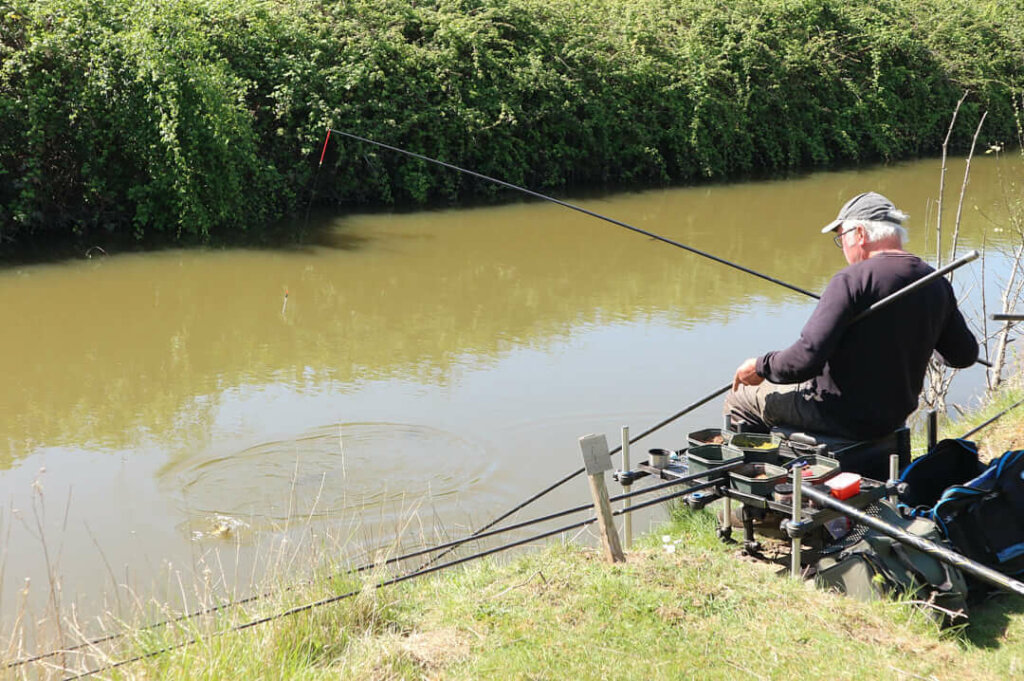
Canal Comparison
Snake lakes remind me of canals, where I first started match fishing. They evoke lots of memories, particularly concerning venues that have changed beyond all recognition. Many of the towpaths I regularly frequented have turned into rat runs for bikes, with boats moored nose to tail, or plush waterside apartments and exclusive residents only parking. Not all pounds have gone that way, but sometimes it’s best not to risk returning and spoiling cherished dreams from the past. The only distraction you are likely to have on a mature snake lake like this, is watching other anglers bagging up as well. Apart from my fishing mates, I haven’t seen another soul. A bit different from some of the busy canals I used to match fish, where you had to grit your teeth every time a boat chugged into view, praying it would behave and not destroy your peg.
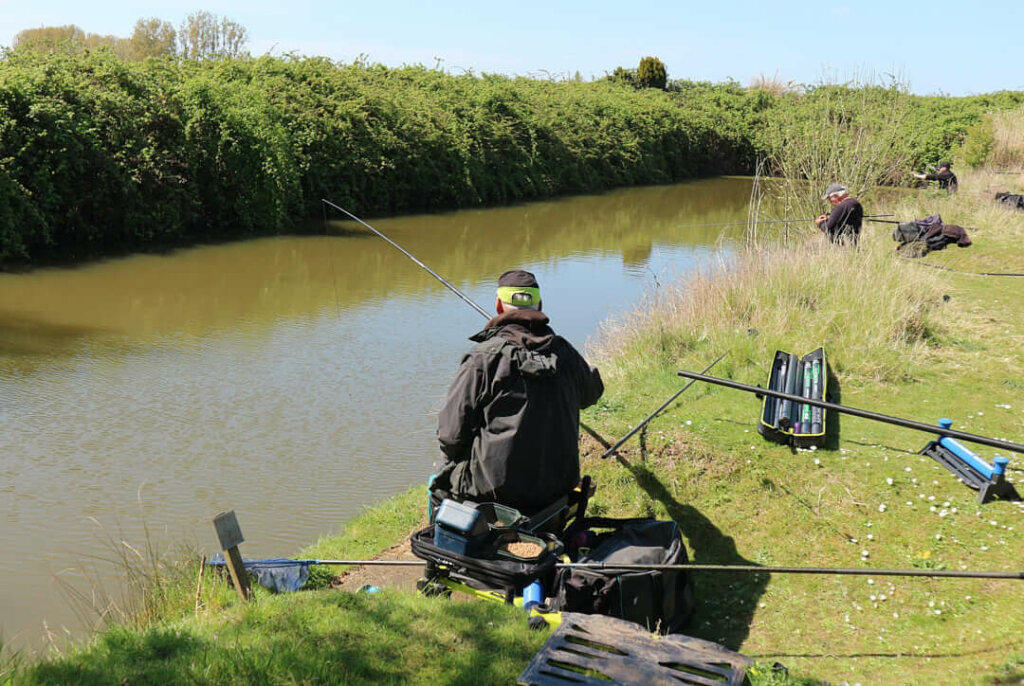
Higher Expectations
Well-stocked snake lakes have raised the bar, compared to my early canal fishing days. Back then, competitions might only be won with a few pounds, or low double figures. You would probably need well over a ton to win a match here. We used to have to travel to countries like Ireland or Denmark to attain figures like that, at a time when canal attendances were in their prime. I can remember midweek summer evening sweepstakes on the River Lee Navigation and Grand Union Canal attracting big fields of anglers. These days, regular commercial fishery events tend to be much smaller affairs, unless offering big money prizes to attract extra attention. On a bright, sunny day like this, normal venues might turn harder, but here it’s the opposite. All the commotion of catching is pulling in even more hungry mouths.

What Next
Canals attracted me because many are joined to rivers, and you never knew what might turn up. I’ve seen monster chub, huge carp, hauls of bleak, even the odd goldfish weighed in. Stories of barbel, zander, and catfish also circulated on some towpaths I visited. Most snake lakes offer good variety too, in this case a surprise golden coloured carp. Some I’ve fished hold barbel and chub, alongside the normal head of carp and silvers. Although the majority of snakes are dominated by carp in matches, a few are capable of providing winning silver fish hauls in winter, when the main species quietens down. I actually won an event with quality roach on one famous snake lake when the carp switched off, after discovering there was a big head of them. I’ve tried for the silvers on here, catching bigger numbers than carp, but they were too small to compete.
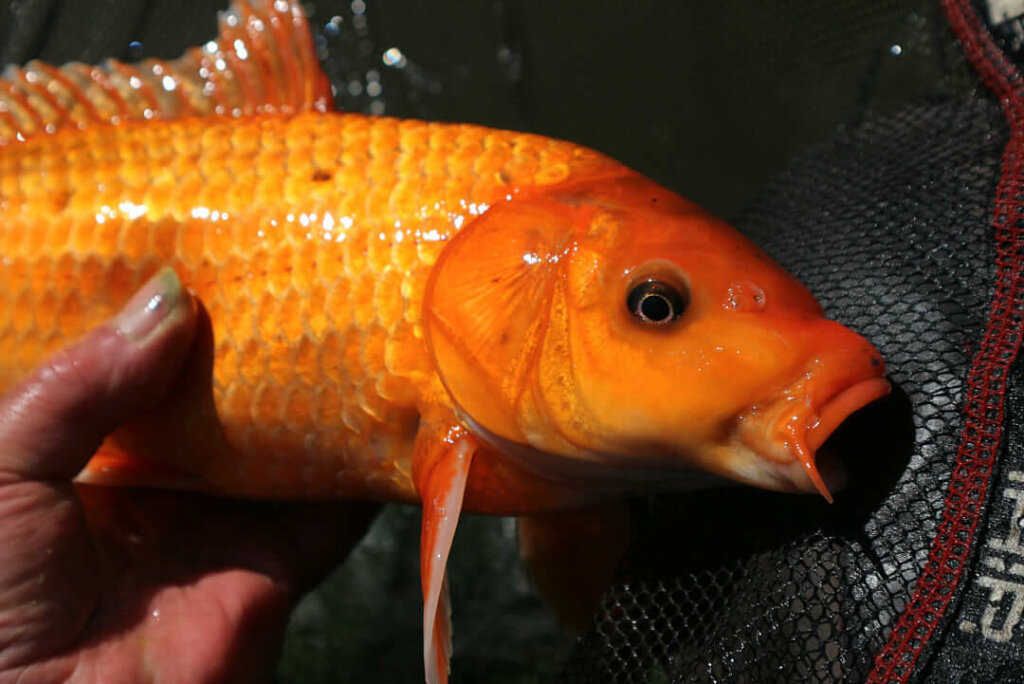
Close Quarters
Taking a walk to see what was going on with the others, it was becoming daft. There were so many carp on top by this stage, dropping short seemed the best idea, seeing little sense in waving longer poles over so many fish. They were everywhere, even down the margins. It would probably have been possible to mug a few with surface baits, but the hordes of tiny rudd were never far away. It didn’t seem to matter ignoring surface cruisers because there was plenty to catch underneath them. In fact, getting a bigger bait to the bottom found slightly better sized samples there, with larger pellets scoring well by this stage. Most of the carp were in the 1-2lb bracket, with some 3-4lb fish mixed in. I did spot one double-figure lump in the distance, but it didn’t appear there were enough of that size to target. I formed a new plan of action.
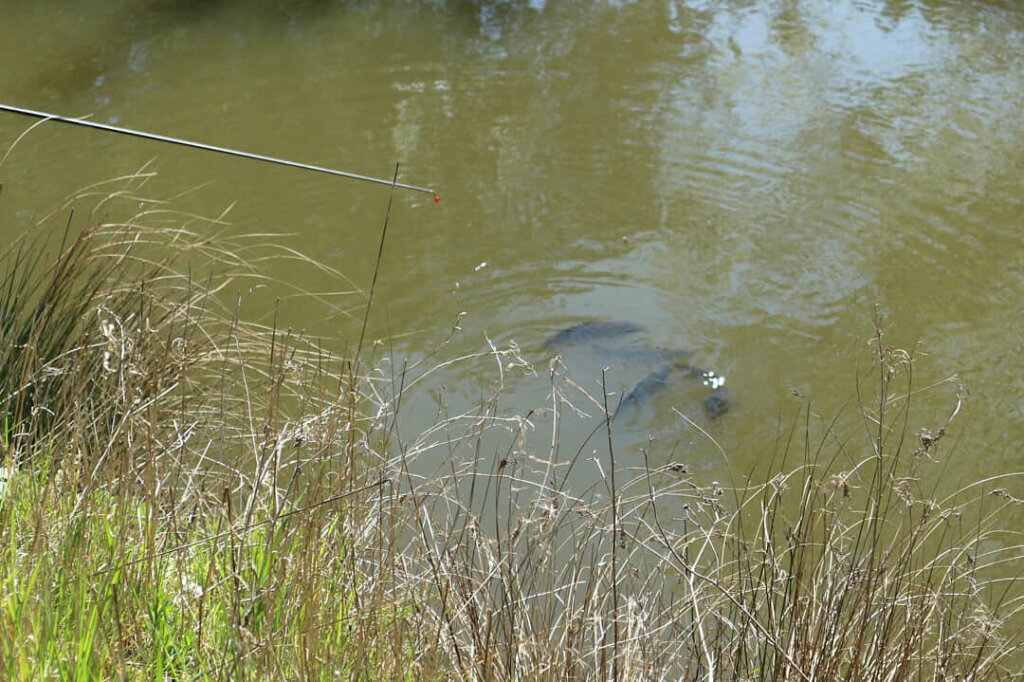
Pasting It
Deciding to drop even shorter with my margin pole, I quickly tied a larger hook on one of my rigs, something suitable for a big dollop of groundbait paste. Super G makes perfect hook bait after adding some extra water to it, tending to sort out any bigger fish. I threw a small helping of pellets in by hand and the carp were all over them. I had considered bringing a shallow rig into play, but knowing this place is swarming with tiny rudd put me off doing that. When there are so many fish competing, paste is normally the best option for being selective and ensuring you catch the better ones. I set the rig at full depth, so the big hook offering didn’t quite sink the float when resting on the bottom. Getting a nice balance where soft paste pulls the float tip down slightly after coming to rest, lets you know if it comes off because the bristle lifts up.
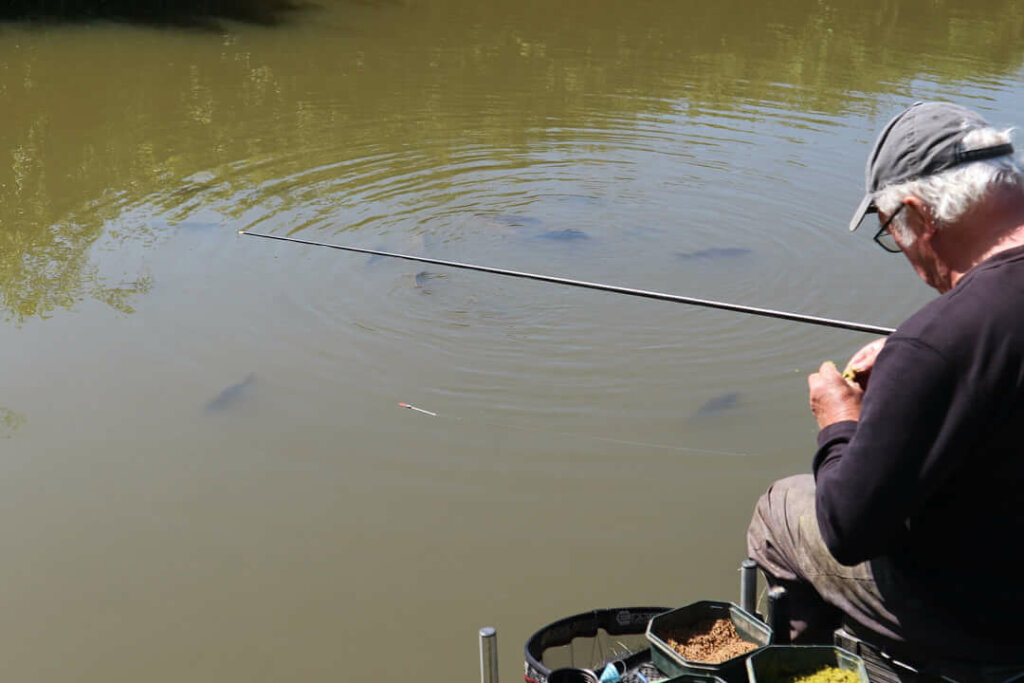
Method Found
It took time to get my new set-up working properly. I had to dump the modified rig in because lowering it slowly resulted in such soft bait getting knocked off the hook. Not just by carp, but also small rudd flashing about among them. Another problem when I tried using a plummet, was is soon became evident the bottom was pitted with small craters, probably caused by carp rooting around. After a while, I found a spot where everything settled nicely, and then it was all action again. By feeding a few pellets by hand to concentrate the fish, once a good blob of paste was nailed on the deck, it only took a few seconds for it to be engulfed. A few small carp managed to do this, but most takers were a better size. By this stage, I had totally lost track of what kind of weight I’d caught, bearing in mind keepnets are only allowed in matches.
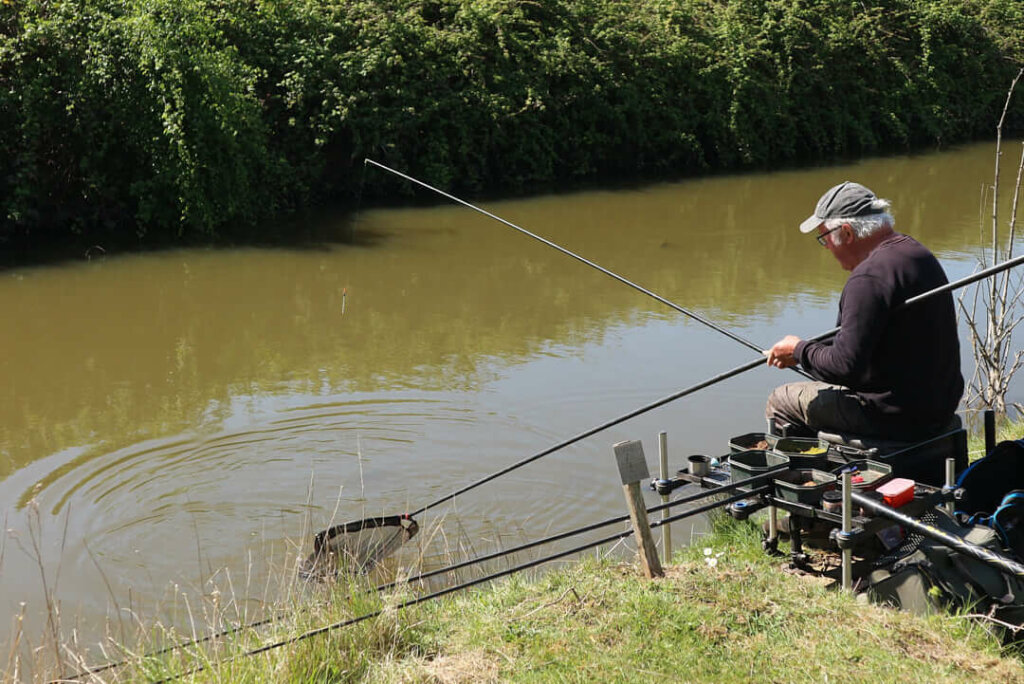
Top Performers
I was impressed by Edge C2 Pole Floats, which withstood a proper hammering as carp after carp, plus crucian-like F1s kept me busy. You need robust floats for this type of fishing. These ones have nice balance in their smaller capacities, cocking quickly, even with light shotting. I prefer slightly strung bulks on places like this, similar to the way I used to tackle canals. I had also forgotten how effective Super-G groundbait can be, not having used it for quite some time. Apart from carp, I can remember catching a big haul of tench with it on another canal style lake many years ago. I’ve used it on the hook with running line tackle too, on places where the carp had become too big for the pole. After experimenting with lots of different groundbaits for paste fishing, Bait-Tech Super G and Dynamite Betaine Green groundbait stood out the most.

Barging Through
Canals can get busy with boat traffic, but on similar looking snake lakes, it’s carp that are more likely to run the show. Instead of slowing down, these hungry creatures became even bolder. By this stage, I had to pick the right moment to get the tackle through them, to avoid chances of foul hooking with so many surface fish. It was the same picture in every peg in the end, something I have never seen before. The strange part was the way bigger samples were underneath this lot, not venturing up to mingle with the cruisers. Back in the heyday of canal matches I mentioned earlier, there were a few venues where chub could behave like this if you fed right. But it seems that’s mostly history now, with many anglers switching to venues like this instead. I can fully understand why, when the only hassle is likely to be such a massive overload of fish!
